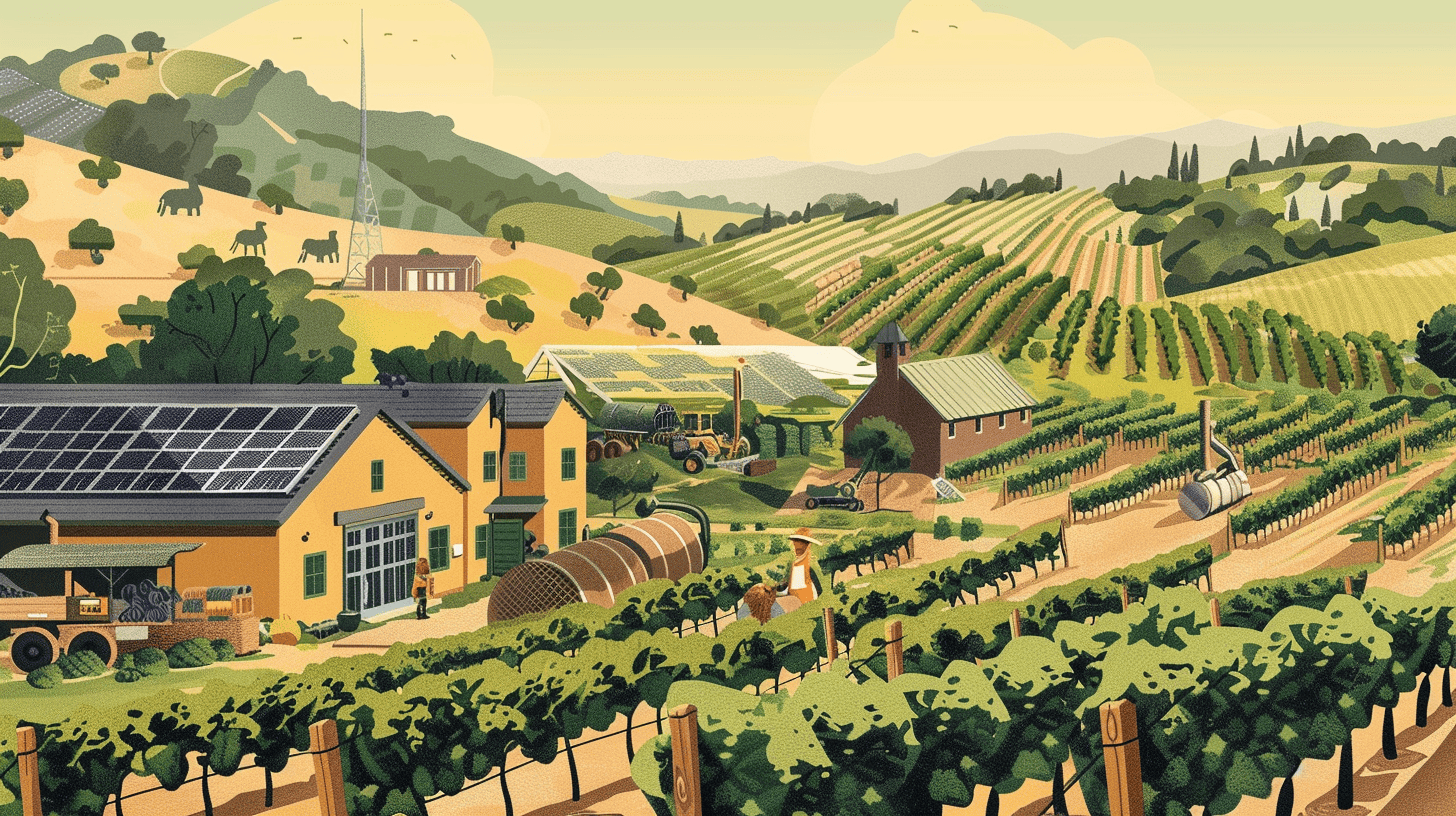A recent study from the Sonoma Sustainable Tourism Observatory by Pamela Lanier and Lora L. Templeton highlights effective methods for reducing the carbon footprint in viticulture, focusing on wineries in Sonoma, Napa, and Mendocino counties. As climate change poses significant risks to the wine industry, these regions have adopted innovative practices to mitigate environmental impact.
Soil health and remediation
• Leading contributors: The study identifies biochemical field emissions and raw material production as leading contributors to greenhouse gas emissions in vineyards. Together, they can represent 27% of a winery’s overall carbon emissions.
• Regenerative agricultural practices: Pioneering work by Robert Cantisano emphasizes transitioning from conventional to regenerative agricultural practices. Cantisano’s approach focuses on enhancing soil health through compost and specific amendments, reducing reliance on chemical fertilizers, and increasing biodiversity.
• Phased transition: Cantisano recommends a phased transition to organic practices, starting with 10% of planted acres to manage risks and allow for comparative analysis. This method helps gradually move growers away from conventional farming practices and encourages long-term sustainability.
Renewable energy installations
• Energy consumption: Renewable energy presents significant opportunities for reducing carbon footprints, with energy consumption from vineyard and winery operations accounting for 11% of overall emissions.
• Case study – Marimar Estate: Marimar Estate in Sonoma County achieved 100% solar power by 2015, initially installing rooftop panels and later adding ground-mounted solar panels. This transition led to substantial cost savings and reduced carbon emissions. The estate utilizes a solar monitoring dashboard to track energy production and savings in real-time, providing accountability and facilitating maintenance.
Green practices in facility construction
• Wildfire rebuilding: Rebuilding efforts following wildfires have incorporated green construction practices, emphasizing renewable materials and energy-efficient designs.
• Case study – Frey Vineyards: Frey Vineyards in Mendocino County rebuilt their facilities with sustainable materials, including recycled concrete, maple wood from old gym flooring, and redwood from water tanks. They also implemented a vermifiltration system for wastewater treatment, utilizing earthworms and beneficial microbes to filter contaminants and produce valuable byproducts like worm castings and vermicompost.
Carbon reduction in packaging
• Packaging impact: Packaging is a major contributor to a winery’s carbon footprint, accounting for 29% of emissions. The study highlights the need for innovation in packaging materials and methods.
• Case studies – Tablas Creek and Jackson Family Wines: Tablas Creek Winery transitioned to lighter Burgundy bottles, reducing glass usage. Jackson Family Wines reduced bottle weight by 2 ounces for their Kendall-Jackson and La Crema lines, saving $1 million in production costs. Industry discussions are also exploring the potential for boxed and canned wines as more sustainable packaging options.



































